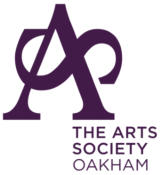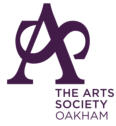Past Lectures & visits
27 November 2025
MARIE-ANNE MANCIO
The History of American Art in 25 iconic works
To celebrate the 250th anniversary of the Declaration of Independence in America,
explore 25 iconic works including Grant Wood’s ‘American Gothic,’ Dorothea Lange’s
‘Migrant Mother,’ Hopper’s ‘Nighthawks,’ of American art.
Preceded by the AGM
23 October 2025
ANNALIE TALENT
Becoming Jane Austen: The Birth of a Literary Superstar
I write only for fame… When Jane Austen declared that she wrote ‘only for fame’,
she was, of course, being ironic: she published anonymously; there is no record on
her gravestone that she was a writer; and her books fell out of print shortly after her
death.
But now, Jane Austen is one of our best loved authors, with legions of adoring fans
throughout the world. Her novels have inspired countless stage and screen
adaptations, and even provided solace to soldiers in the trenches. She is the face of
the £10 banknote, and she adorns tea towels and fridge magnets everywhere. Jane
Austen is now very famous indeed.
But how did it all happen? This lecture will chart Jane Austen’s rise to fame; it will
explore the making of a literary celebrity and examine Austen’s legacy, 250 years
after her birth.
25 September 2025
RUPERT DICKENS
Rembrandt’s hand: a question of attribution
What makes a genuine Rembrandt?
This question has dogged museums and art historians since the great Dutch master’s
reputation soared to prominence at the end of the 19th century. The Rembrandt
Research Project tried for nearly five decades to pare down the painter’s oeuvre,
using the latest technology and a barrage of experts. But a backlash in the 1990s
cause many disavowed Rembrandts to be put back on the list.
This lecture charts the ebb and flow of Rembrandt attribution and tries to answer the
question: who decides? Science or the subjective eye of the connoisseur.
28 August 2025
LUCY HUGHES-HALLET
George Villiers, Duke of Buckingham – the Handsomest Man in Europe and
Patron of the Arts
A king's favourite who amassed a great art collection.
George Villiers, Duke of Buckingham, was the favourite of King James I - who
addressed him as ‘my sweet child and wife’ - and subsequently chief minister to King
Charles I.
Buckingham was a beauty, and he surrounded himself with beautiful things. He
enjoyed exquisite clothes, like the fabulous white silk suit encrusted with diamonds
that he wore to visit the Queen of France. He was a superb dancer. When he cut
capers during a court masque King James startled visiting ambassadors by shouting
out ‘By God, George, I love you!’
26 June 2025
SALLY HOBAN
The Arts and Crafts Movement in the Midlands
Many people are familiar with the national designers of the 19th century Arts and
Crafts Movement such as William Morris and Charles Ashbee. But the Midlands made
a huge contribution to the movement as well.
Designers at The Bromsgrove Guild of Handicrafts for example produced the
exquisite wrought iron gates for Buckingham Palace.
This lecture sets the work of these Midlands designers in the context of the national
Arts and Crafts Movement using examples of jewellery made by Arthur and Georgina
Gaskin, stained glass by Florence Camm, ceramics from the Ruskin Pottery and
more.
13 May 2025 Outing:
Lamport Hall and Gardens Extra fee payable
A Tudor founder, blind book collector, wayward 17th century grand tourist, eccentric
Victorian, Hollywood actor, commanding wives and dedicated daughters – Lamport is
full of characters. As home to the Isham family for over four centuries, the fortunes,
interests and trials of each generation have left their mark.
The Hall is set in approximately 10 acres of tranquil gardens, the result of over 450
years of love and dedication, enclosed by a spacious park. Although their size and
location are the same as when they were first laid out, their design has been strongly
influenced by the interests and tastes of successive owners.
22 May 2025
HILARY WILLIAMS
The Frick and Wallace Collections and Their Link with Knole
The Frick Collection, New York, is one of the finest-quality museums in the world. It
belongs largely to the Gilded Age of American connoisseurship of the early years of
the 20th century and is a testament to the taste of its founder, steel magnate, Henry
Clay Frick. He died on the eve of WWI after being able to collect some of the best
pieces available in Europe and America. His agents were really effective and the
result is a first rate collection of fine French furniture, enamels, porcelain, paintings by
Bellini, Van Eyck, Holbein, Titian, Rembrandt, Vermeer, Van Dyck, Rubens, El Greco,
Velázquez, Fragonard, Ingres, Renoir, JMW Turner, Constable, Whistler and many
others. These are all set within an outstanding mansion in Manhattan.
The Wallace Collection, in Hertford House, London, is a Pandora’s box of francophile
taste in the late 18th and 19th centuries. It was amassed by the Marquess of Hertford
and his natural son, Sir Richard Wallace and his French wife, Lady Wallace, who, on
her death in 1897, bequeathed the collection to the nation. It is stunning in its quality.
Fine French furniture, Renaissance bronzes, Sevres porcelain, European paintings
from Titian, Van Dyck and Rubens to Ruisdael, Gainsborough and Lawrence, adorn a
sumptuous interior dripping with many pieces actually made for French Royal
interiors, including Versailles.
24 April 2025
IAN COCKBURN
Moorish Architecture – the Legacy of a Vanished kingdom
The Alhambra of Granada, the Great Mosque of Cordoba and the Alcazar of Seville
are the three most impressive monuments to the architectural creativity of the Moors
in Spain, but there are many other examples worthy of mention too.
The classical origins that influenced the Moorish style are less well-known, but
fascinating to explore, as too is the unique interior decorative style developed by the
Moors, which gives their architecture its beauty and exotic appeal – an appeal so
strong that the Christians sometimes copied it, even as they slowly reconquered the
territory from its Islamic rulers.
This lecture provides a comprehensive introduction to the peninsula’s Moorish
architecture.
27 March 2025
JUSTIN REAY
Can Computers Cry? Art touches human emotions which machines cannot feel.
Art of all kinds can touch us and make us respond, often beyond the expectation of
the artist. Happiness, sadness, pity, compassion, a spiritual uplifting, curiosity, all
human emotions which even the most sophisticated digital programming will never
match.
Justin demonstrates how art arises from human imagination to feed our emotions,
and discusses the difference between mere imitation of the physical world – which
even robots can be taught to do – and the creation of truly human art which enhances
our lives.
27 February 2025
JAMES WRIGHT
Historic Building Mythbusting
In his book ‘Historic Building Mythbusting’ the archaeologist James Wright, a resident
of Nottinghamshire, has used many case studies from the county to articulate some
of the tales which are told about ancient architecture.
These include stories of secret passages underneath Wollaton, ship timbers in
Worksop, strange sculptures at Laxton parish church, stones used by archers to
sharpen arrows in Wilford, and yarns about Ye Olde Trip to Jerusalem being the
oldest inn in England… but are any of these stories true?
23 January 2025
TIMOTHY WALKER
The Subtle Science and Exact Art of Colour in English Garden Design
In 1882 Gertrude Jekyll wrote a short but seminal article in The Garden in which she
urged the readers to “remember that in a garden we are painting a picture”. As an
accomplished watercolour artist, Miss Jekyll was familiar with the principles of using
colours, but she felt that in gardens these principles “had been greatly neglected”.
This talk looks at how to apply these principles in designing a border, but it also looks
at the ways in which a border is different from a painting.
However, it goes further than this and looks at how contemporary work of the likes of
Turner, Monet, Rothko, Jackson Pollack evolved in parallel with ideas about what a
garden or border should show.
Web site designed, created and maintained by Janet Groome,
Handshake Computer Training.

Web site designed, created and maintained by Janet Groome,
Handshake Computer Training.

Please view this page on a
tablet or a PC























